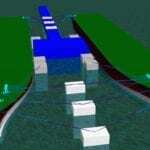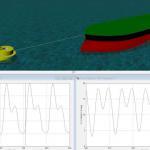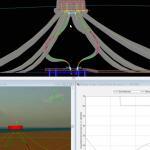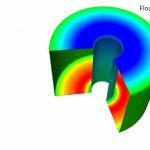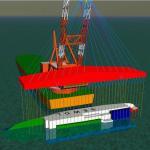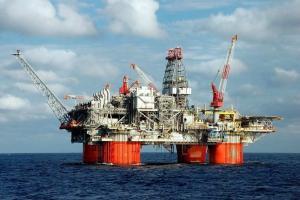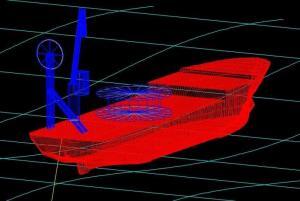Published By:Stewart Technologies on: February 18, 2016
During exploration and production operations in both the gas and oil industry, the riser is a critical component in the process. Production risers bring gas and oil to the surface for transportation and processing, and drilling risers inject mud and drilling fluids into the well bore during drilling operations.
As off-shore rigs move further and further away from land, the challenges in designing a riser that both performs well and rests damage from the natural forces acting on it underwater increase dramatically. Waves, tides, storm systems, high pressures and salinity all combine in an ocean environment to create a destructive force that slowly wears away at the riser, eventually causing structural failures or fluid leaks.
One of the best ways to prevent such problems is to have a riser analysis done, which models the effect of hydrodynamic forces on the riser components, allowing the design to be modified in order to make it more resilient.
Riser analysis is an important first step in any drilling operation, and when done correctly, it can have many benefits. Here are just a few of the ways that riser analysis can help you to save money and improve the performance of your exploration and production operations:
#1 Selecting the Best Type of Riser For the Situation
There are many types of risers common today, both rigid and flexible, and they each have strengths and weaknesses, deepening on the environment.
Attached risers are rigid structures that are connected to the side of a rigid platform, compliant tower or concrete gravity structure, connecting the well bore to the platform.
Pull tube risers run through the center of a fixed platform, and consist of an outer tube through which a flowline or pipeline is pulled from the sea floor.
A steel catenary riser is a curved riser used to connect the sea floor to a fixed or floating platform, or to connect two separate platforms.
A top-tensioned riser is a rigid vertical riser that ends just below a floating platform, with the final connection from the riser to the platform made with flexible pipe.
A riser tower is common in deep water environments, and uses a combination of a steel tower, buoyancy tanks for tension and flexible risers to deliver oil or gas to a floating platform.
Flexible risers are a hybrid system that is entirely flexible, allowing it to move both vertically and horizontally.
Drilling risers are rigid risers that are used only during the drilling process to inject drilling mud into the well.
Some types of risers are best used in shallow areas where the force at work on the system are minimal, and vertical or horizontal motion is limited. Other types of risers are used specifically for deeper waters, where the wave action, tides and pressure have a greater effect, and where there are significant amounts of both horizontal and vertical forces working on the riser and the production platform.
Selecting which type of riser will be the best in a certain situation can be difficult, but by performing a riser analysis, you can model the effects of wave action, tides, weather systems and other natural forces at a particular location. This data can then be used to select the best type of riser for the job, and avoid the costly mistake of choosing the wrong riser, then having to replace it after it proves to be an inefficient option for the region or when it fails completely.
#2 Improving the Riser Design
Once you have the basic type of riser selected, a riser analysis can help you to improve its design for use in a particular environment. By modeling the potential damage caused by corrosion, wave action, tides and pressure on the riser components, you can determine the weak spots in the design, and improve it to perform as expected in the field. This saves money by eliminating poor designs before they ever make into production.
The analysis can also be expanded to include moorings, lines, anchors and other components that are associated with the riser system, to make sure they are designed well for their intended use and placement.
#3 Reducing Maintenance Costs
Over time, the motion of the waves, the salinity of the ocean and the large amount of pressure under the water’s surface will cause riser and mooring components to fail, requiring significant amounts of labor to repair the problems.
By having a riser analysis done on your riser design, you can minimize the possibility of failure and reduce wear on structurally-significant components by modeling the hydrodynamic forces that are at work on the system. Using the results, the components can be replaced or redesigned to stand up to the forces better, reducing the amount of maintenance required, as well as the downtime and costs associated with it. This also helps to improve the safety of the rig workers, by reducing the amount of maintenance that must be performed and by making platform operation safer.
#4 Increasing Riser Performance
Riser analysis can also be used to model the fluid dynamics within the riser system itself. This will help to design a riser that transfers gas and oil to the surface, or drilling fluids to the well bore, in the most efficient way possible, increasing production amounts and the performance of the riser system.
Additionally, the analysis can help model the forces at work on gaskets and seals in the system, allowing them to be redesigned to last longer and to prevent spills. Leaks of oil, gas or drilling fluids can potentially have serious environmental effects, and by using riser analysis to design a better riser system, you can avoid environmental problems and the costs associated with the cleanup.
Riser analysis is an easy and affordable way to improve the design of your riser system, increase the performance of your exploration or production platform, reduce associated maintenance costs, and increase the overall safety of platform operation. One of the most common tools used for riser analysis is the OrcaFlex software package, which is capable of modeling the hydrodynamic forces present in nearly any marine environment, and it can help you to design and build a riser system that will withstand all of the forces present beneath the waves.
Sources:
https://stewart-usa.com/designanalysis.php
https://stewart-usa.com/hydrodynamic-analysis.php
https://stewart-usa.com/riser-analysis.php
http://www.rigzone.com/training/insight.asp?insight_id=308&c_id=17



